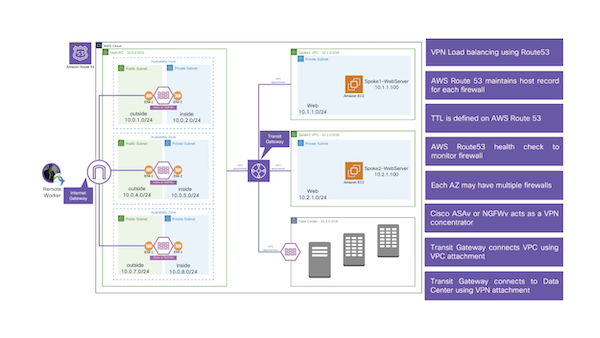| This article refers to the Cisco AnyConnect VPN. If you're looking for information on the Prisma Access VPN Beta that uses the GobalConnect app, see: Prisma Access VPN Landing Page. If you're not sure which service you're using, see: How do I know if I'm using the Cisco AnyConnect VPN or the Prisma Access VPN? |
On this page:

The University of North Carolina at Chapel Hill(UNC-CH) uses Cisco AnyConnect as its Virtual Private Network (VPN). This application provides you with an encrypted connection (secure tunnel) from off campus to gain access to UNC-CH internal network applications and shared network drives such as B:, to complete work that.
- Type “Cisco AnyConnect”. Right-click the Cisco AnyConnect Secure Mobility Client icon. This will bring up a list of options. Hover over Send to, then click Desktop (create shortcut).Now that you have a desktop shortcut, you can double-click the icon whenever you want to launch Cisco AnyConnect in the future.
- Anyconnect VPN offers full network access. The remote user will use the anyconnect client to connect to the ASA and will receive an IP address from a VPN pool, allowing full access to the network. In this lesson we will use clientless WebVPN only for the installation of the anyconnect VPN client.
- Cisco Anyconnect Vpn Client free download - Cisco VPN Client, Cisco Legacy AnyConnect, Cisco AnyConnect, and many more programs. Fix the connection problems with Cisco VPN client on Windows 8.1.

Primer
This guide will assist with the installation of the Cisco AnyConnect VPN client for Windows (Vista, 7, 8.1 and 10).

Installation
You need administrator level account access to install this software. When prompted with Windows UAC (User Access Control) you need to allow to install this software.
- Download the VPN installer from MIT's download page, Cisco AnyConnect VPN Client for Windows. Note:MIT certificates required.
- Find and double click the downloaded file named 'anyconnect-win-4.5.XXXXXX.exe', where XXXXXX is the sub-version number of the installer.
- On the following screen titled 'Welcome to the Cisco AnyConnect Secure Mobility Client Setup Wizard', click Next.
- When presented with the software license agreement, click I accept on the slide-down menu and click Next.
- Click Install when prompted (Note: the user must be an administrator of the machine to install).
Note: You may be warned the program comes from an unknown publisher and asked to confirm that you want to allow it to make changes to your computer. Click Yes to continue. - When installer begins installation you will see
- Click Finish when prompted to complete installation.
Connect
- Launch Cisco AnyConnect.
- Enter the address of the MIT Cisco VPN:
- Duo (two-factor authentication) required users must use: vpn.mit.edu/duo.
- Non-Duo (single-factor authentication): vpn.mit.edu
- Click Connect.
- When prompted, enter your MIT username and password.
- For Duo users, in the field labeled 'Second Password' you can enter one of the following options:
- push - Duo will send a push notification to your registered cell phone with the Duo Security mobile app installed
- push2 - Duo will send a push notification to your _second registered device with the Duo Security mobile app installed_
- sms - Duo will send anSMSto your registered cell phone; then enter that as your second password (you will fill out the login info twice with this method, first to get the sms code, then to enter it)
- phone - Duo will call your registered cell phone
- phone2 - Duo will call your second registered cell phone
- The one time code generated by your hardware token or the Duo Security mobile app (the code changes ever 60 seconds)
In this example, we've entered 'push' in the 'Second Password' field.
Sometimes methods with lag time, like Call, will time out before allowing you to complete Duo Authentication. SMS and one time codes generated by your hardware token (yubikey) or the Duo Security mobile app are the fastest methods and can help you avoid time-out issues.'How to call different devices'
If you have multiple devices that can use the same method, for instance two mobile phones or two phones that can receive phone calls, you can reference them by different numbers. For instance, to call the top device on your managed devices page (http://duo.mit.edu), you can use 'phone' (for the default) or 'phone1' to call the second phone, you can use 'phone2'.
- In this example, you will receive a push notification on your cell phone. Click Approve.
- Cisco AnyConnect should now present you with the MIT VPN banner and the VPN connection will complete.

See Also
I enjoy the new VPN client, it’s small and fast, however I hated that you can’t save profiles in the drop down list like you could in the traditional VPN client.
This has been bothering for a long time and kept finding conflicting information on if this was possible or not. Finally got it to work.
Unauthorized Connection Mechanism - Cisco Community
This is for version 3.1x and Windows 7 let me know if this works for your version and OS.
- Create a preferences.xml file in C:ProgramDataCiscoCisco AnyConnect Secure Mobility ClientProfile
- Use this format
<?xml version='1.0' encoding='UTF-8'?>
See Full List On Cisco.com
<AnyConnectProfile xmlns='http://schemas.xmlsoap.org/encoding/'>
<ServerList>
<HostEntry>
<User>dclouduser</User>
<SecondUser></SecondUser>
<ClientCertificateThumbprint></ClientCertificateThumbprint>
<ServerCertificateThumbprint></ServerCertificateThumbprint>
<HostName>dCloud</HostName>
<HostAddress>dcloud-rtp-anyconnect.cisco.com</HostAddress>
<Domain></Domain>
<Group>ssl_url</Group>
<ProxyHost></ProxyHost>
<ProxyPort></ProxyPort>
<SDITokenType>none</SDITokenType>
<ControllablePreferences>
<LocalLanAccess>true</LocalLanAccess></ControllablePreferences>
</HostEntry>

<HostEntry>
<User>dmacias</User>
<SecondUser></SecondUser>
<ClientCertificateThumbprint></ClientCertificateThumbprint>
<ServerCertificateThumbprint></ServerCertificateThumbprint>
<HostName>Speech-Soft</HostName>
<HostAddress>vpn.dmacias.com</HostAddress>
<Domain></Domain>
<Group>ssl_url</Group>
<ProxyHost></ProxyHost>
<ProxyPort></ProxyPort>
<SDITokenType>none</SDITokenType>
<ControllablePreferences>
<LocalLanAccess>true</LocalLanAccess></ControllablePreferences>
</HostEntry>
</ServerList>
</AnyConnectProfile>
- Save the file.
- Restart the connectivity client.
- Enjoy
~david
EDIT 01/18/2017: This also works with Cisco AnyConnect 4.x!
